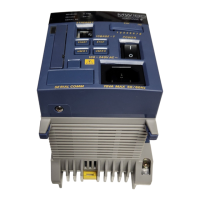2-9
IM MW100-01E
Installation and Wiring
2
2.4 Connecting Signal Wires
General Precautions When Wiring the Input/Output Signal Wires
WARNING
• To prevent the possibility of electric shock when wiring, confirm that the power
supply source and signal source are turned OFF. After making the connections,
secure the terminal cover and do not touch the terminals with your hands.
• For signal wires on which voltage exceeding 30 VAC / 60 VDC is applied relative
to the ground potential or between signals, use reinforced (double) insulation
wires. For all other signal wires, use basic insulation wires. For the withstand
voltage of insulation wires, see the table below.
Applied Voltage (Vrms or VDC) Basic Insulation Double (reinforced) insulation
30(60VDC) to 100 620 Vrms 1000 Vrms
101 to 150 840 Vrms 1400 Vrms
151 to 300 1390 Vrms 2300 Vrms
301 to 600 2210 Vrms 3700 Vrms
• To avoid electric shock when removing the terminal plate or block and wiring the
terminals, attach the terminal block or plate to the input output module before
inputting or outputting signals. Electric shock or fire can result if signals are
applied to the terminals if the terminal block is removed from the input/output
modules.
• When wiring to the plate with screw terminal or screw terminal block, use round,
insulation coated crimp-on lugs on the terminals (for 4-mm screws on the screw
terminal block, or 3-mm screws on the plate with screw terminal) that do not
come out when loose.
• To prevent fire, use signal wires of the following temperature ratings.
Module Type Temp. Rating
Screw terminal 75°C
Analog output module, PWM output module signal wires 85°C
Universal input module, digital input module, digital output module, 80°C
4-wire RTD resistance input/output module, strain input module

